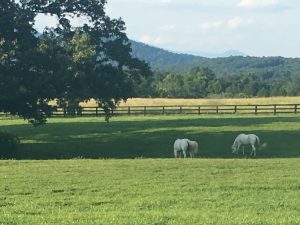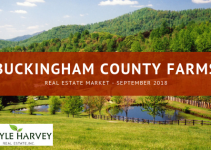 If you are thinking about buying a horse farm in Virginia, there are several things to consider when it comes to pasture land management. Whether you are creating your own Virginia horse farm or buying an established farm, I hope these tips will be helpful!
If you are thinking about buying a horse farm in Virginia, there are several things to consider when it comes to pasture land management. Whether you are creating your own Virginia horse farm or buying an established farm, I hope these tips will be helpful!
It takes 18-24 months after seeding for pastures to become established and ready for grazing. Depending on weather conditions, it could be longer. Quite often, pasture management is neglected. The soils need to be tested every 2-3 years to serve as a guideline to the fertility & pH.
The pH of your soil may impact the nutrient availability to your horses. Soil pH should range between 6.2 and 6.5 for a good grass. Talk with your local extension agent, farm cooperative or USDA office about whether you need to apply lime or other fertilizers. Phosphorus and Potassium need to be maintained in the higher range.
Establish four or more pastures to enable rotational grazing. Each horse needs 2-3 acres. Once the grass is grazed down to 2-4″, it is time to rotate the horses to another pasture. Allow pastures to rest & replenish between grazing. If possible the grass should be allowed to grow to 8-10″ before horses return to graze it. The pace of growth will depend on the weather conditions. Faster in the spring and slower in the cooler months. Monitor how much your horses are eating and their overall nutrition. When the grass stops growing, you should keep the horses off of the pastures and feed hay.
Pasture Design:
Think about how you will use the farm on a daily basis. What is the maximum number of horses you plan to have at your farm? Do you need to build all the infrastructure for it at once or can it be done over time? Slowly building and adjusting over time will help you eliminate costly mistakes. Think about ease of use of your paddock designs and access to the stable, water and run-in sheds. Try to keep your paddocks square. Irregular shaped pastures are not only less attractive but tend not to be grazed evenly. Uniformity of the paddocks should include soil types, grasses, aspects and slopes.
The pastures should be free of trees or at least have them fenced off so that the horses do not girdle them. The horses should have access to shaded areas, whether it be the canopy of the tress or run-in sheds.
Create an area of 600′ to 1200′ per horse with good drainage to serve as a dry area for horses when they need to be removed from the pastures. For ease of use, this should be near the barn. This is the area to use when feeding hay in the colder months because the horses’ hoofs can cause quite a bit of damage to the sod when it is soft as in wet (freeze & thaw) periods. See this page for info on dry lots.
When you are ready to buy or sell your Virginia horse farm, give us a call. We would love the opportunity of working with you to achieve your horse farm dreams! You might also be interested in reading our blog post about buying a horse farm in Charlottesville or searching for your new Charlottesville VA area horse farm!
